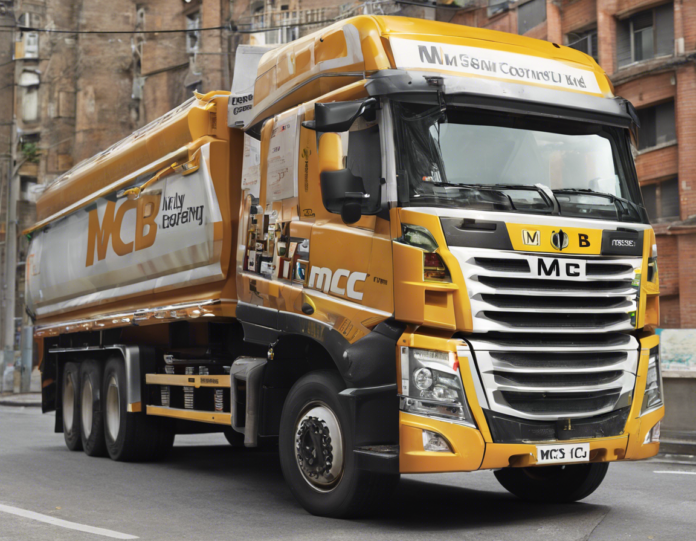What is MCB?
MCB stands for Miniature Circuit Breaker. In the field of electrical engineering and construction, MCBs are essential components used to protect electrical systems from damage caused by overcurrents or short circuits. They are commonly found in residential, commercial, and industrial buildings as a safety measure to prevent electrical fires and hazards.
How does an MCB work?
An MCB functions by automatically detecting abnormal electrical conditions such as overloads or short circuits in a circuit. When such a fault is detected, the MCB trips and interrupts the flow of electricity, thus cutting off power to the circuit. This action helps to prevent overheating of wires, electrical appliances, and ultimately reduces the risk of fire.
Types of MCBs
There are different types of MCBs available, each designed for specific applications and current ratings. Some common types include:
- Single Pole MCB: Protects a single phase in the electrical system.
- Double Pole MCB: Safeguards two live conductors or a single-phase with a neutral conductor.
- Triple Pole MCB: Protects three live conductors and is commonly used in industrial applications.
- Four Pole MCB: Safeguards three live conductors and a neutral conductor, commonly used for three-phase systems.
- Residual Current Circuit Breaker with Overcurrent Protection (RCBO): Combines the functions of an MCB with a residual current device (RCD) for enhanced protection against electric shock.
Advantages of Using MCBs
Using MCBs in electrical installations offers several advantages, including:
- Enhanced Safety: MCBs help in preventing electrical hazards and fires by quickly isolating faulty circuits.
- Convenience: They are easy to install, operate, and reset after tripping.
- Cost-Effective: Compared to traditional fuses, MCBs are more cost-effective in the long run as they can be reused multiple times.
- Selective Tripping: Modern MCBs can be selectively coordinated to trip only the affected circuit without disrupting the entire electrical system.
- Space-Saving: Being compact in size, MCBs help in optimizing space within electrical panels and distribution boards.
Selecting the Right MCB
When choosing an MCB for a specific application, several factors need to be considered:
- Current Rating: Select an MCB with a current rating suitable for the connected load.
- Breaking Capacity: Ensure that the MCB can safely interrupt the maximum fault current expected in the circuit.
- Number of Poles: Choose the appropriate number of poles based on the electrical system configuration.
- Tripping Curve: Match the MCB tripping curve (B, C, or D) with the characteristics of the load to be protected.
- Brand and Quality: Opt for reputable brands and high-quality MCBs to ensure reliability and performance.
Installing and Maintaining MCBs
Proper installation and maintenance are crucial for the effective operation of MCBs. Here are some important tips:
- Installation: Follow the manufacturer’s guidelines and electrical codes when installing MCBs to ensure correct wiring and connections.
- Testing: Periodically test the MCBs to ensure they trip correctly in case of faults.
- Labeling: Properly label MCBs to indicate the circuits they protect for easy identification during troubleshooting.
- Regular Inspection: Inspect MCBs for signs of damage, overheating, or aging and replace them if necessary.
- Professional Help: In case of any doubts or complex installations, always seek help from qualified electricians.
FAQs (Frequently Asked Questions)
- What is the difference between an MCB and a fuse?
-
While both serve the purpose of protecting electrical circuits from overloads and short circuits, MCBs are reusable and can be reset, whereas fuses need to be replaced after tripping.
-
Can an MCB protect against electric shocks?
-
MCBs are primarily designed to safeguard against overcurrents and short circuits, but combining them with a Residual Current Device (RCD) can provide protection against electric shocks.
-
What causes an MCB to trip frequently?
-
Frequent tripping of an MCB can be due to overloaded circuits, short circuits, ground faults, or a faulty MCB itself. It is advisable to investigate the root cause to prevent reoccurrences.
-
Can I install an MCB myself?
-
While it is possible to install an MCB if you have the necessary knowledge and skills, it is recommended to seek professional help to ensure proper installation and compliance with safety regulations.
-
Do MCBs require regular maintenance?
-
MCBs generally do not require regular maintenance, but periodic checks for proper operation, cleanliness, and any signs of wear are advisable to ensure their effectiveness.
-
Is it necessary to match the MCB tripping curve with the load characteristics?
-
Yes, selecting the correct tripping curve (B, C, or D) ensures that the MCB responds appropriately to the characteristics of the connected load, thereby providing optimal protection.
-
Are there special MCBs for sensitive electronic equipment?
-
Yes, for sensitive electronic equipment, it is advisable to use Type B MCBs with a lower tripping current to prevent damage caused by transient overcurrents.
-
Can I use a higher-rated MCB for a lower load?
-
It is not recommended to use an MCB with a higher current rating than the connected load as it may not provide adequate protection and could lead to safety hazards.
-
What is the typical lifespan of an MCB?
-
The lifespan of an MCB can vary depending on factors such as usage, environmental conditions, and quality. Generally, MCBs can last for 10-15 years or more with proper care.
-
Are there any advancements in MCB technology?
- Yes, there have been advancements in MCB technology, with features such as remote monitoring, communication capabilities, and improved sensitivity to enhance safety and performance in modern electrical installations.










